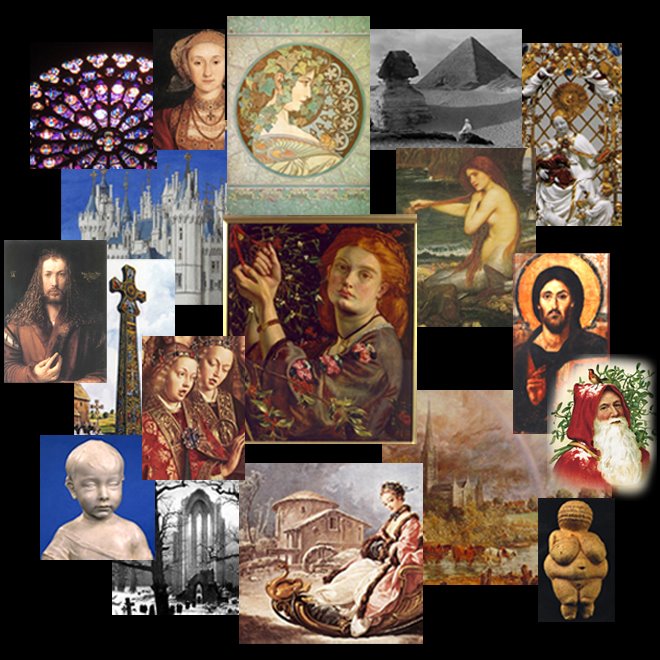from the he.ART

- J
- Maryland, United States
- This is a place to talk about ART. Ideally there will be regular posts about images with discussion of the artist, medium, style, content, etc. There will also be frequent posts on poetry and other literature. Hopefully the comments/discussion will be intelligent, responsible, useful, informative, revealing of opinion, and appreciative.
I am an art historian. Yes, I admit it. And isn't that half the battle? I teach Art History and Art Appreciation, trying to share my passion for art with my students. I specialize in the medieval period, reliquaries, 19th century British art, and the Pre-Raphaelites, most specifically the work of Dante Gabriel Rossetti. Poetry and its relationship with the sister art of painting is my second passion. This blog is to explore and discuss these works which enrich our lives.
FYI -- I put the "Mature Content" filter on this blog because of the images of nudes that we will be discussing.
Wednesday, March 25, 2009
Venus of Willendorf - Age Before Beauty?
The Venus of Willendorf - - For only four inches of limestone and red paint, she looks pretty good for her age! She dates from 28,000 BCE and is the oldest sculpted human form.
Fertility figure? Perhaps.
The cave-man's ideal of feminine beauty? Perhaps.
Status symbol for the best hunter in the group of neolithic nomads? Perhaps.
Whoever she was, whatever she was, she may be the greatest achievement of artistic development in history. Or perhaps she is just the starting point for countless other images throughout time and into our modern world.
Tuesday, March 24, 2009
Ancient and 19th Century England

Stonehenge
John Constable (1776-1837)
1835
Watercolour
The first image up for discussion here is this wonderful watercolour by John Constable. Constable painted his England the way England was "supposed" to look -- of course not necessarily the way it actually did. He idealized the landscape that he loved because he loved it.
The subject of this image is Stonehenge -- or is it? Perhaps it is actually an image of Time. The stones are the ruins of the mysterious past. The clouds and the sky are ever changing, perpetually in motion and thus always in the "future" because they cannot have a present and do not exist in the past. The artist paints in his present day. Constable worked during a time of great change in England. The Industrial Revolution was affecting everything -- the air was polluted, buildings were being torn down, people were out of work, machines were in use -- resistance was futile. Except for Constable. He painted his beloved England without all these changes, without all the unrest and disappointment, without the darkness, the dirt and the machines. Constable's landscapes are generally idyllic, showing the land as unchanged and unchanging. But this image of Stonehenge acknowledges great changes wrought by time. Perhaps Constable's sorrow at the state of his (our) modern society is reflected in a picture of the great monument from the past. Perhaps Constable is giving us his vision of a sad future he sees for England.
Labels:
change,
Constable,
landscape,
painting,
stonehenge,
time,
watercolor
Subscribe to:
Posts (Atom)

